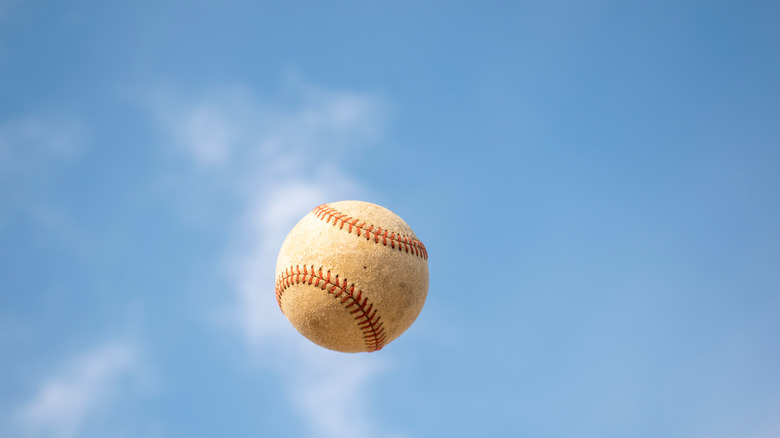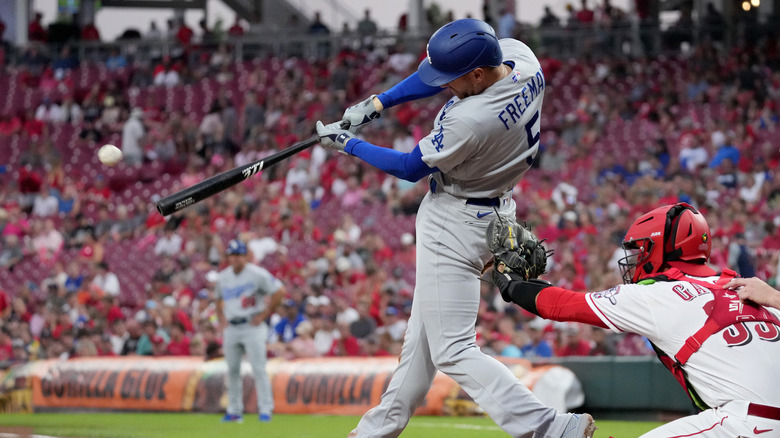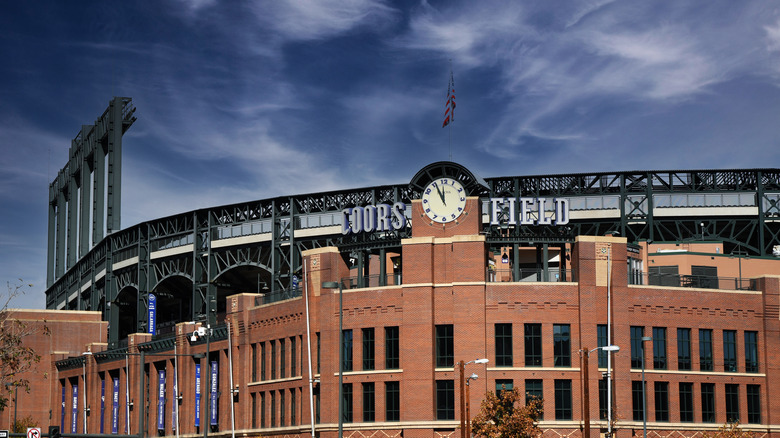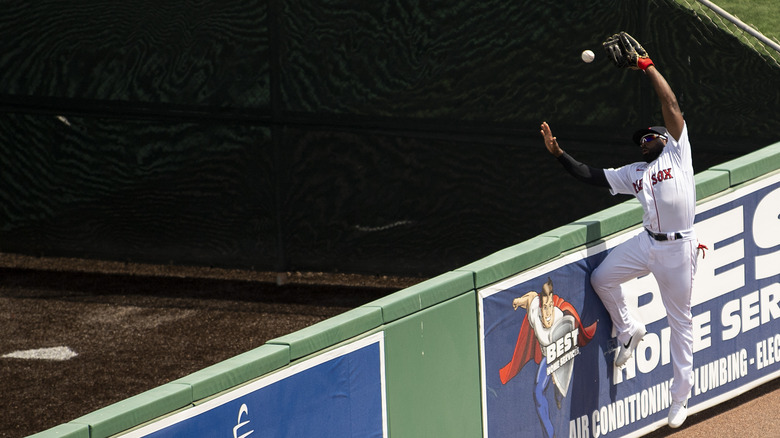Baseballs Fly Further In Warm Weather Than They Do In Cold Weather. Here's Why
Weather is a huge part of an outdoor sporting event, as the conditions can affect strategy or even postpone the entire game. In lousy weather, football teams typically tend to keep the ball on the ground rather than risk airing it out in rain or snow. If a thunderstorm rolls into a baseball game, you can bet the players will be called into their respective dugouts, because it's no secret that a wide open field is one of the worst places to stand if lightning is in the area.
However, it's not just precipitation or storms that have an effect, but temperature too, and not just in how much water players need to drink or if quarterbacks need to break out those really big, heavy jackets with no arm holes that just drape over their shoulders. On the baseball field, the temperature can play a factor in the amount of offense in a game, so if you're a fan of the long ball, your best bet may be to buy a ticket for a game on the hottest, most humid day of the year, per Popular Science.
The science behind temperature and home runs
While several factors related to the air can have effects on how a baseball travels, the temperature is one of the biggest. According to Popular Science, air temperature also changes the air's density. In colder temperatures, the air becomes denser which makes it harder for the ball to travel through the tightly packed molecules. Conversely, warm temperatures cause the air to become less dense and easier for a ball to travel through.
"For a ball hit at the typical home run speed and trajectory, a 10 degree [Fahrenheit] change in temperature is worth about a little over three feet in distance," Allen Nathan, a professor at the University of Illinois told Popular Science. "It might not seem like very much, but over the course of a whole season, it actually starts to add up."
Nathan created a model that shows the relationship between temperature and distance and gives an idea of just how big of an impact such changes can have (via Baseball Prospectus).
Other factors can influence how far a baseball travels
Several other meteorological factors can affect how far a baseball travels, such as are humidity, altitude and barometric pressure, and wind speed. All of those can vary throughout a game (with the obvious exception of altitude) and warm weather tends to bring more favorable conditions for hitters.
Humidity for instance makes for better hitting conditions. This is because the high amounts of water vapor displace heavier gases like oxygen and nitrogen, according to Popular Science. This allows the ball to travel easier through the lighter gas, which means that hot, humid weather found in places like Florida is better for hitters than hot, dry weather in places like Arizona.
Altitude and barometric pressure also have can influence how dense the air is and make it easier or more difficult for balls to travel. Famously, Coors Field, home to Major League Baseball's Colorado Rockies, has the highest elevation of any big league ballpark, sitting at 1600 meters, or 5,249 feet above sea level (via the University of Wisconsin). The high altitude and low barometric pressure make the air 15% less dense than that seen at most other ballparks. This means less frictional force working against the ball as it travels and leads to more home runs and extra-base hits than would be seen at ballparks located close to sea level.
Does the temperature affect other aspects of a baseball game?
While home runs are usually the focus when talking about how temperature has an impact on a baseball game, other areas may be affected as well. According to the American Meteorological Society, there's not just an increase in home runs as the weather increases, but also offense overall. Of 23 MLB stadiums from which data was collected, 18 of them saw increased offensive production in warmer weather. Of those same stadiums, 19 of also saw increased batting averages for home players, while visiting hitters saw increased averages at 20.
Additionally, warm temperatures also seem to bring a boost to slugging percentages, a cousin of batting averages which is weighted to place greater emphasis on home runs and extra-base hits and is regarded as a better metric of a player's offensive production than batting average. Conversely, for the most part, walks also decreased as the temperatures increased, with the somewhat unusual exception of visiting hitters on American League teams.



